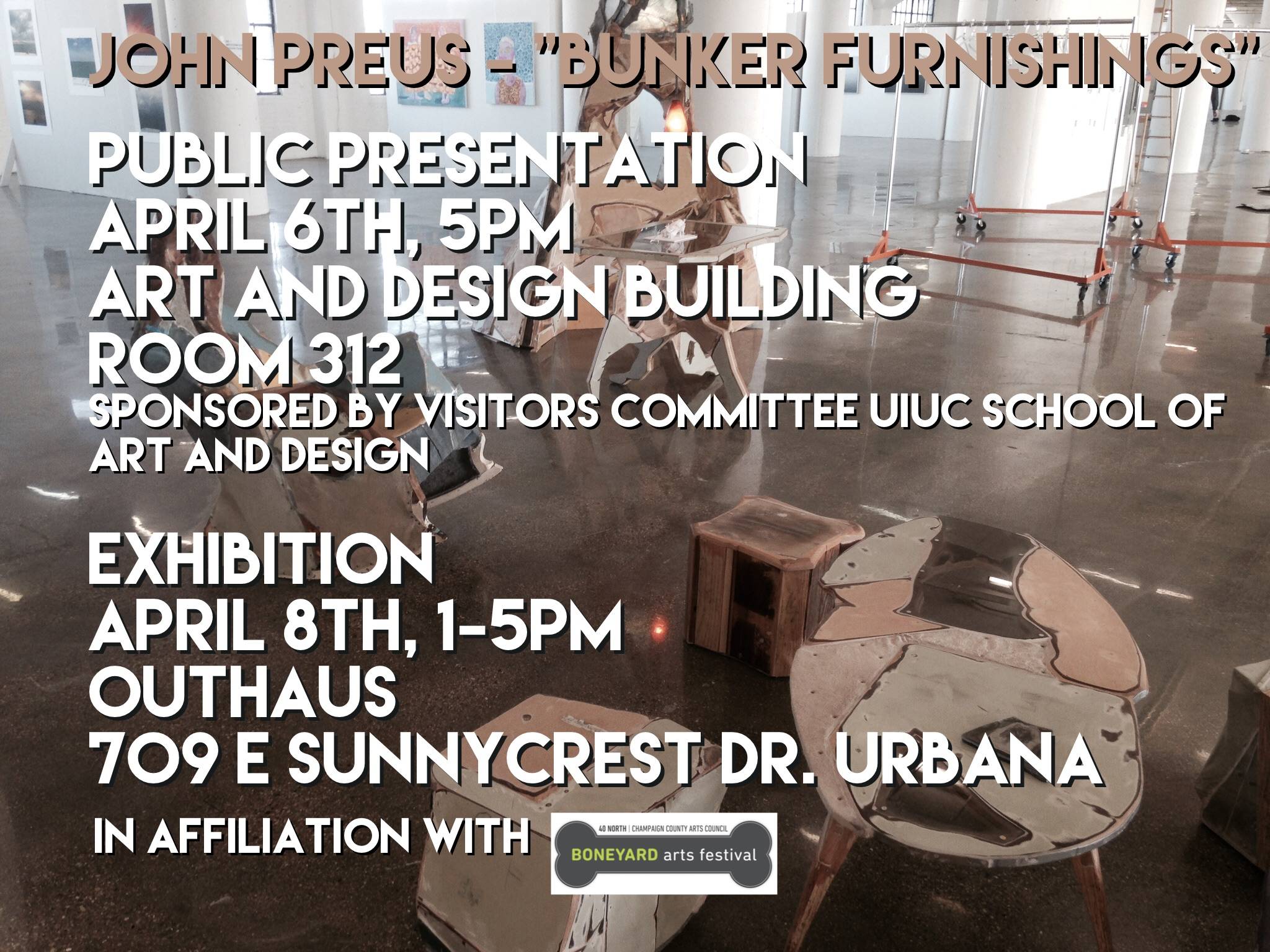Despite heinous rumors to the contrary (spread by the propietor himself), it seems like the Outhaus could not stay closed for long. Just the winter, really, which makes sense. Whether this is a special case for the Boneyard Festival or a hint at better days to come, all Outhaus exhibitions are limited engagements, so let’s take advantage of the opportunities we have.
Here’s the official press release:
John will be presenting his work in Prof. Jorge Lucero’s class, “Social Practice and Public Pedagogy,” at 5:00 pm on Thursday, April 6, in room 312 of the Art and Design Building, at 408 E. Peabody Drive in Champaign. This presentation is open to the public, and is sponsored by the Visitors Committee of the School of Art & Design.
John’s exhibition will be opening at the Outhaus on Saturday, April 8, from 1:00-5:00 pm, as part of the Boneyard Arts Festival. The Outhaus is located in the backyard at 709 E. Sunnycrest Drive in Urbana.
Bunker Furnishings
In 2013, Chicago closed 49 public schools, a symptom of crisis in education, municipal commitment to public services, and the failings of funding and tax structures in general. We know that an uneducated and uninformed populace will be the death of the democratic project. As such, this material takes on the pathos of end times, as evidence of the failures of education as well as the inability to systemically overcome basic racial divisions that continue to stoke violence and antagonism throughout the country and the world. Preus has described his work as alternately utopian and apocalyptic. There’s a sort of mid-range optimism in creating new things from old broken ones, like compost, and in imagining new possibilities emerging from past failures. But there’s also a long-range pessimism about the likely outcome of the policies and commitments that allow for such pockets of deep poverty and racialized injustices, that even a social justice-focused art market can’t or isn’t interested in addressing directly.
Since 2014, Preus’s primary material source for both speculative and functional installations has been a stock of 6 semi loads of damaged CPS furniture rerouted from the landfill to his studio. Imagined as a single work, an extended memorial that like a fungus erupts in various locations from an invisible root structure. As an exploration of memorial, public and private life, Preus reconfigures these materials to create a sort of parlor. As memorial this body of work spreads the spoils of questionable social policy into living rooms throughout the world as a sort of tactile archive.








